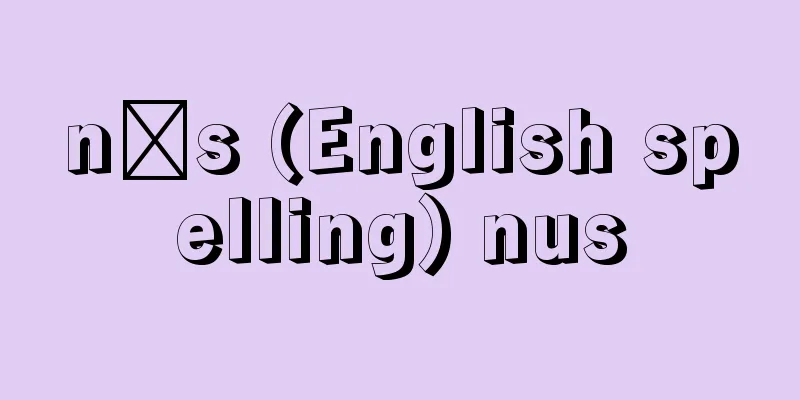Education industry

|
This industry supplies various knowledge that is useful not only for school education but also for work and intellectual life. It can be broadly divided into the educational property industry and the educational service industry. The educational property industry includes various educational materials manufacturers, from audiovisual equipment to stationery, and various educational materials manufacturers, from teaching materials for equipment to publishing and printing materials. The market size for educational equipment was estimated at about 200 billion yen in 1980 (Showa 55). In addition to the Ministry of Education's (now the Ministry of Education, Culture, Sports, Science and Technology) Second 10-year Educational Materials Development Plan (total 457.2 billion yen, of which 230 billion yen was borne by the national treasury), which began in 1978, and the expectation of an expansion of educational equipment in companies and homes led to a surge in the entry of home appliance, publishing and office supply manufacturers. In the 1970s and 1980s, the spread of cassette decks, cassette tapes, color televisions and video tape recorders (VTRs) promoted the development of educational software, and in the 1990s, the use of personal computers (PCs) and CD-ROMs was added to this, and educational materials were enriched. Furthermore, with the spread of the Internet, online schools (already implemented at half of the universities in the United States) have begun at some schools in Japan as well. Since 2000, DVDs (digital versatile discs), which have about ten times the storage capacity of CD-ROMs, have become mainstream, and the combination of DVD-ROMs and writable DVD media has made it possible to develop an even more diverse range of educational computer software. Throughout the 1990s, sales of media that make up content (information content) are estimated to have averaged around 270 billion yen per year. The government established a special budget for the fiscal year 2000 (special budget for economic revitalization in areas such as information and communications, science and technology, and the environment) as the "Millennium Project," and allocated 250 billion yen to this. The goal is to have all public elementary, junior high, and high schools: The educational services industry includes school education from kindergarten through vocational school, university, and graduate school, as well as out-of-school education such as preparatory schools, cram schools, and training schools (the so-called "examination industry"); vocational education such as nursing, bookkeeping, vocational training, and corporate education; and hobby-related education such as foreign languages, music, Japanese and Western dressmaking, cooking, and flower arranging. Public expenditures, which amounted to 6.1% of national income and 16.3% of administrative expenses (FY1996), are the foundation of the education market, but the expansion of the education industry is being supported by the following factors: the public's expectations of school education, which are based on an awareness of the "educational society"; the rising ability of parents to pay for higher education due to the decline in the number of children; the increase in expenses for extracurricular activities, mainly cram schools, private tutors, study guides, piano and abacus schools; the increase in hobbies and cultural expenses in leisure expenses; and the expansion of corporate education. In particular, the expenses for extracurricular activities across kindergartens, elementary schools, junior high schools and high schools reached 209,631 yen per elementary school student per year in a 1996 survey by the Ministry of Education, and the market size of cram schools, which expanded to around 400 billion yen in 1980, is still expanding, reaching 1.5 trillion yen in 1996. Large companies have begun to expand the sales channels for cassette teaching materials and study materials through chains of cram schools, and commercial tests using deviation scores are also popular. Furthermore, the cost of university education has soared at both public and private institutions, and, assuming education expenses in the Family Income and Expenditure Survey to be 100, the proportion of university education expenses rose from 18.5% in 1970 to 33.2% in 1998. Over the same period, the proportion of supplementary education expenses increased from 10.4% to 22.3%. In 1994, the proportion of consumer expenditures that was spent on university student education was 15.7% for families with one child, and 23.5% for families with two children whose eldest child was a university student. As the birthrate continues to decline, the number of students enrolled in schools from kindergartens to specialized schools has been on a steady decline since peaking at 27.83 million in 1983. This has not only led to a decline in demand for the supplementary and advanced education industry, which has been a leader in Japan's education industry, but the rapid decline in the 18-year-old population, from 2.07 million in 1991 to 1.53 million in 1999, is having a serious impact on the management of private universities in particular. During this time, the tendency to evaluate qualifications and abilities has taken root, especially in the corporate world, and the need for lifelong education and learning has increased. Throughout the 1990s, the education industry, which has an annual market size of 40 trillion yen including school education, has been accelerating its shift to lifelong learning for working adults. Companies that have begun to demand high levels of expertise from their employees have begun to encourage employees to obtain qualifications, and the number of working adults enrolled in vocational schools and night graduate schools has increased. This is because the needs for employee education at companies have expanded from the traditional focus on new recruits and female employees to include managers, executive candidates, executives, and other people at the core of management. Education that utilizes networks is already being conducted by the Open University and major preparatory schools in the form of university entrance examination courses that are conducted via satellite systems. In response to this, universities aiming to expand their adult education are beginning to use the Internet to distribute graduate-level courses to companies. If this type of Internet education becomes widespread, not only is it expected to create a large demand for Internet peripherals, but university-based adult education will create a new market as a major pillar of Internet business, alongside book sales, online securities, and Internet banking payments. The size of the Internet education market was said to be approximately 30 billion yen as of 2000, but is predicted to reach 1 trillion yen by 2010. [Shinichi Tonomura] "The Education Industry" by Hiroto Nakayama (1980, Toyo Keizai Shinposha)" ▽ "Research Report on the Education Industry" (1994, Tokyo Metropolitan Government Bureau of Life and Culture, Price Distribution Division) [Reference items] | | |Source: Shogakukan Encyclopedia Nipponica About Encyclopedia Nipponica Information | Legend |
|
学校教育のほか、仕事や知的生活に役だつ各種の知識を供給する産業で、大別して、教育財産業と教育サービス産業がある。教育財産業には、視聴覚機器から文房具までの各種教具、機器の教材から出版・印刷物に至る多様な教材メーカーが含まれる。教育機器関連の市場規模は1980年度(昭和55)の推計で約2000億円で、78年度に始まった文部省(現文部科学省)の第二次教材整備十か年計画(総額4572億円、うち国庫負担2300億円)のほか、企業や家庭への教育機器の拡充が見込めたことから、家電・出版・事務用品メーカーの参入が相次いだ。1970~80年代には、ハード面ではカセットデッキ、カセットテープ、およびカラーテレビ、ビデオテープレコーダー(VTR)の普及が教材ソフトの開発を促進したが、90年代にはこれにパーソナルコンピュータ(パソコン)とCD-ROM利用が加わり、教材の充実が図られた。また、インターネットの普及につれ、オンラインスクール(アメリカの半数の大学ですでに実施されている)が日本でも一部の各種学校で始まっている。2000年(平成12)以後はCD-ROMの約10倍の記憶容量をもつDVD(デジタル多用途ディスク)が中心となり、教育用パソコンソフトもDVD-ROMと書き込み可能なDVDメディアとの組合せによってさらに多様なソフトが開発可能となる。90年代を通じて、コンテンツ(情報の内容)を構成するメディアの売上げは年平均2700億円程度とみられる。 政府は「ミレニアム・プロジェクト」として、2000年度予算の特別枠(情報通信・科学技術・環境等経済新生特別枠)を設け、これに2500億円が計上された。2005年度を目標に、すべての公立の小・中・高等学校において、 教育サービス産業には、幼稚園から専修学校・大学・大学院までの学校教育のほか、学校外教育として予備校・学習塾・けいこ塾など進学関連教育(いわゆる「受験産業」)、看護・簿記・職業訓練・企業内教育などの職業教育、外国語・音楽・和洋裁・料理・いけ花など趣味的教育などがある。 国民所得比6.1%、行政費比16.3%(1996年度)に及ぶ公財政支出が教育市場の基盤であるが、「学歴社会」を意識する国民の学校教育への期待と子供数の減少に伴う親の高等教育費負担能力の上昇が進学率を高めていること、さらに学習塾・家庭教師・学習参考書・ピアノ・そろばん塾などを中心とする学校外活動費の増大、レジャー支出に占める趣味・教養費の増加、企業教育の拡充などが教育産業の拡大を支えている。とくに、幼稚園・小学校・中学校・高等学校を通じて学校外活動費は、文部省の1996年度調査でも、小学生で1人当り年間20万9631円に達し、80年に4000億円前後に膨らんだ学習塾の市場規模はなお拡大をみせ、96年には1兆5000億円といわれている。大手企業がチェーン方式による学習塾経営を通じてカセット教材や学習教材の販路拡大に乗り出したほか、偏差値方式による業者テストも盛んである。また、大学の教育費は国公私立ともに高騰し、家計調査の教育費を100とした割合で、大学の教育費の割合は1970年の18.5%から98年には33.2%に増加した。同期間の補習教育費の割合は10.4%から22.3%に増加している。94年の大学生の教育費の消費支出に占める割合は、子供1人の場合で15.7%、子供2人で長子が大学生の場合で23.5%に及んでいる。 「少子化」の進行とともに、幼稚園から各種学校までの在学者数は、1983年の2783万人をピークに減少の一途で、日本の教育産業をリードしてきた補習進学教育産業の需要縮小につながっただけでなく、18歳人口の91年の207万人から99年の153万人への急激な減少は、とくに私立大学の経営に深刻な影響を与えている。 この間、企業社会を中心に資格や実力を評価する傾向が定着し、生涯教育・生涯学習の必要度が高まってきた。1990年代を通じて、学校教育を含め市場規模が年間40兆円にのぼるとされる教育産業は、社会人を対象とする生涯学習へのシフトを急いでいる。社員に高度な専門性を要求するようになった企業では、社員の資格取得を奨励するようになり、社会人の専修学校、夜間大学院などへの就学者が増加している。企業の社員教育のニーズが、従来の新人・女子社員を中心としたものから、管理職、幹部候補生、経営層など経営の中枢に位置する人にまで及んできているからである。 ネットワークを活用する教育は、すでに放送大学や大手予備校の衛星システムによる大学受験講座で行われている。これに対し、社会人教育の拡大を目ざす大学では、インターネットを活用して、大学院レベルの講座を企業向けに配信する動きがみられる。こうしたネット教育が本格化すれば、ネット周辺機器への大型の需要が見込まれるほか、大学による社会人教育が、書籍販売、オンライン証券、ネット銀行決済などと並んで、ネットビジネスの大きな柱として新市場を生み出すこととなる。ネット教育の市場規模は2000年現在で約300億円といわれているが、2010年には1兆円になるとも予測されている。 [殿村晋一] 『中山裕登著『教育産業』(1980・東洋経済新報社)』▽『『教育産業に関する調査報告書』(1994・東京都生活文化局価格流通部)』 [参照項目] | | |出典 小学館 日本大百科全書(ニッポニカ)日本大百科全書(ニッポニカ)について 情報 | 凡例 |
>>: Education Reform Committee
Recommend
Arithmetic random number
...When rolling a dice, (1) the probability of ea...
Okumyougata Village
...A village in Gujo County, central Gifu Prefect...
Large Ectophyllum
[ Buccinum tenuissium ]. A gastropod of the order ...
Rank insignia - Kaikyusho
In the military, police, etc., badges that show ra...
Euphorbia neriifolia (English spelling) Euphorbianeriifolia
… [Hiroshi Yuasa]. … *Some of the terminology tha...
Elders' Association - Elders' Association
A Chinese secret society. It was founded in Sichu...
Shuhiyushi (English spelling) zhū pī yù zhǐ
This is a compilation of memorials sent by local o...
Avatamsaka Sutra Art
This refers to Buddhist art developed based on the...
Nausea - Akushin
[noun] ① The desire to do evil. The desire to harm...
qāfila al-mawsim (English spelling) qafilaalmawsim
…The distance traveled by a caravan in a day vari...
Mahakaccana (English spelling)
…He is a different person from Purāṇa, who was no...
Joint application principle
… In principle, an application for a registration...
Acheilognathus longipinnis (English name) Acheilognathus longipinnis
…[Morizumi Nakamura]. … *Some of the terminology ...
Uzuki 8th - Uzukiyoka
It refers to April 8th and the events held on tha...
Amati, Andrea - Amati
…His two sons Antonio (c. 1540-c. 1600) and Girol...









